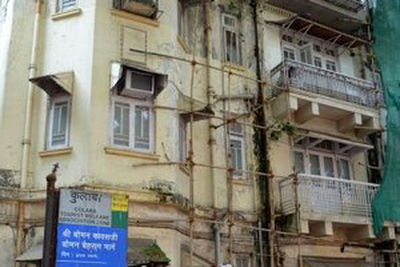The account of the time when celebrated Iranian writer, translator and intellectual Sadegh Hedayat (1903-1951) stayed in India will soon be released in Iran by Tehran-based Cheshmeh Publication.
Indian researcher in modern Persian literature Nadeem Akhtar, from the Center for Persian and Central Asian Studies at Jawaharlal Nehru University in New Delhi, has traced Hedayat’s life during his stay in India in his book ‘Hedayat in India’.
Akhtar’s research in the book explains the account of Hedayat’s stay in India from 1936-1937. It is the first research on the subject, Mehr News Agency reported.
The Persian publication of the book will be unveiled at the upcoming edition of the Tehran International Book Fair, slated for May3-13 at ‘Shahr-e-Aftab’ (Sun City) complex in south Tehran.
In an introduction to ‘Hedayat in India,’ Akhtar said that the writer’s sojourn in the country is inadequately recorded in his biographies. He has not only traveled to several parts of India but also depicted the country’s various facets of life in his short stories. Hedayat’s research traces his whereabouts in Bombay (now Mumbai), the metropolis in which he lived.
Hedayat sailed for India at the invitation of Iranian poet, writer and linguist Ali Shirazpour Parto (1907-1997), better known as Shin Parto.
As an envoy of Iran’s Foreign Ministry, Parto was based in Bombay. He accommodated Hedayat in the city and provided him all the publishing facilities available at the consulate in the city. This enabled Hedayat to publish stenciled copies of his previously written stories ‘The Blind Owl, for which he is best known, and ‘Madame Alavieh.’
Where Hedayat Stayed
“The account of Hedayat’s stay in India has remained hidden. His guest house, Summer Queen at Arthur Bunder Road, is mentioned in his letter to Iranian historian, and literary scholar Mojtaba Minavi," says the author.
Letters alone cannot pinpoint the guest house, but Akhtar finds the descriptions of the house in one of Hedayat’s short stories, ‘Capricious.’ A century-old elevator made of iron and wood, for instance, is one of the elements shared by the story and the guest house.
‘Capricious’ tells the story of a man living on the ground floor of a guest house. He hears Indian music and looks out the window and sees a pauper coughing in a disturbing way. Through the window, he could also see waters of a sea. From this, Akhtar deduces where exactly Hedayat lived in the 8-apartment guest house.
Since the building has an octagonal plan and is flanked by adjacent buildings, possibilities are narrowed down to a ground floor apartment on the east wing of Summer Queen, where Akhtar believes Hedayat stayed for a while.
Southern India
During his stay in India, Hedayat visited Hyderabad and Mysore in southern India. He also attended the birthday party of the ‘philosopher king’ Krishna Raja Wadiyar IV, the ruling maharaja of the princely state of Mysore, who was one of the world’s wealthiest men.
The picturesque details of the city of Bangalore (now Bengaluru) in the former state of Mysore, as well as its suburbs Kengeri are recorded in Hedayat’s story ‘Sampingue.’ The short story about a Brahmin family portrays the entire socio fabric of Bangalore and its surroundings.
“There are clear mentions of places and objects in Bangalore such as the Ganesha Temple, Vani Vilas Hospital and Lal Bagh. The places are near the palace of Tipu Sultan, an 18th century ruler of Mysore, which might have attracted Hedayat to look at the Persian inscription carved there," Akhtar says in the book’s introduction.
“Sadegh Hedayat was indeed a story writer par-excellence who did not showcase Iran alone but also depicted India as naturally and factually as possible.
He recorded important and material moments of his life in his works. Hence, it can be concluded that the stories of Sadegh Hedayat having an Indian tinge are not simple concoction or figments of imagination, but facts recorded in fiction."
Source: Financial Tribune

